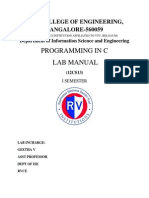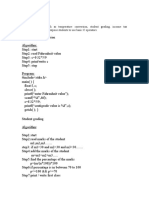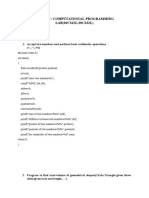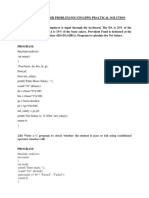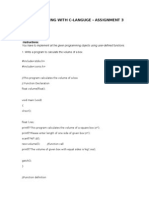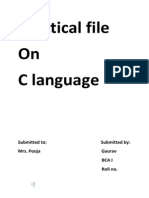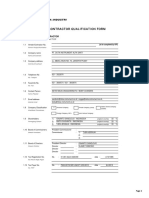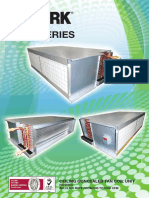0% found this document useful (0 votes)
452 views15 pagesFinal CPL 18CPL17 LAB PROGRAMS Updated
This document contains a lab manual for the C Programming laboratory course at Cauvery Institute of Technology in Mandya, India. It was prepared by Prof. Sachith B.K of the Computer Science and Engineering department. The manual contains 10 programming problems covering topics like arithmetic operations, solving quadratic equations, checking palindromes, binary search of arrays, prime number checking, matrix multiplication, Taylor series approximation of sine, and string operations. Students are to write C programs to solve these problems and gain experience with basic programming concepts.
Uploaded by
sachu195Copyright
© © All Rights Reserved
We take content rights seriously. If you suspect this is your content, claim it here.
Available Formats
Download as PDF, TXT or read online on Scribd
0% found this document useful (0 votes)
452 views15 pagesFinal CPL 18CPL17 LAB PROGRAMS Updated
This document contains a lab manual for the C Programming laboratory course at Cauvery Institute of Technology in Mandya, India. It was prepared by Prof. Sachith B.K of the Computer Science and Engineering department. The manual contains 10 programming problems covering topics like arithmetic operations, solving quadratic equations, checking palindromes, binary search of arrays, prime number checking, matrix multiplication, Taylor series approximation of sine, and string operations. Students are to write C programs to solve these problems and gain experience with basic programming concepts.
Uploaded by
sachu195Copyright
© © All Rights Reserved
We take content rights seriously. If you suspect this is your content, claim it here.
Available Formats
Download as PDF, TXT or read online on Scribd
/ 15











